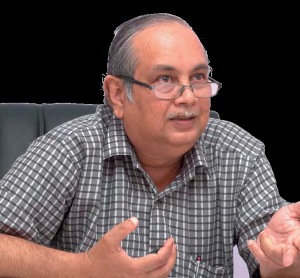 Dr Harsha Chadaga,
Dr Harsha Chadaga,
Head- Clinical Operations and Lead Neuro-radiologist,
Columbia Asia
The high-end diagnostic monitors help radiologist navigate and look at images at nano levels without losing the resolution

Indian Radiology has gone through a paradigm shift in delivering quality imaging. What other developments has the segment seen?
In the last decade there has been a sea change in equipment profile, support technology and training, impacting significantly the quality of radiology services. Modern equipments provide in-depth and detailed information of human anatomy, sophisticated software enhance the acquired image and helps build high resolution images which help the radiologist provide an accurate diagnosis.
The high end diagnostic monitors help the radiologist navigate and look at images at nano levels without losing the resolution. Today fusion images from multiple modalities are possible, images at multiple level (slices) and technologies like MRI- PET and HIFU have completely changed the landscape of radiology practice.
Tell us about your Radiology department. What are the new radiology devices you have introduced lately?
Columbia Asia Radiology Group has been established with an objective to provide easy access to expert and reliable radiology services. The group provides reporting, peer reviews, education programms and research services. 40 radiologists located across the Columbia Asia group of hospitals are connected on a secure (HIPPA compliant, FDA approved) virtual platform and report over a 1000 images a day for 36 clients across the Indian Subcontinent, in addition to serving its own hospitals spreadacross the country. The group also runs educational programmes which includes a post graduate radiology course recognised by National Board of Examinations (DNB) and FRCR 2B course in association with Royal College (UK) examiners.
What are the new cloud based software your hospitals has for tele-radiology?
We also a pilot of our tele-radiology operations using cloud and found it to be operational satisfactory. The financial feasibility and network reliability at this point has stalled us from progressing further on tele-radiology. Nevertheless it is just matter of time before cloud becomes the main stay making the operation cost effective and secure.

| Interventional radiology
Interventional radiology is being pursued as sub-specialty over the last two decades and being applied not only for definitive treatment but also for palliative care. Its scope is from head to toe. Some of the examples being: |
Be a part of Elets Collaborative Initiatives. Join Us for Upcoming Events and explore business opportunities. Like us on Facebook , connect with us on LinkedIn and follow us on Twitter , Instagram.




